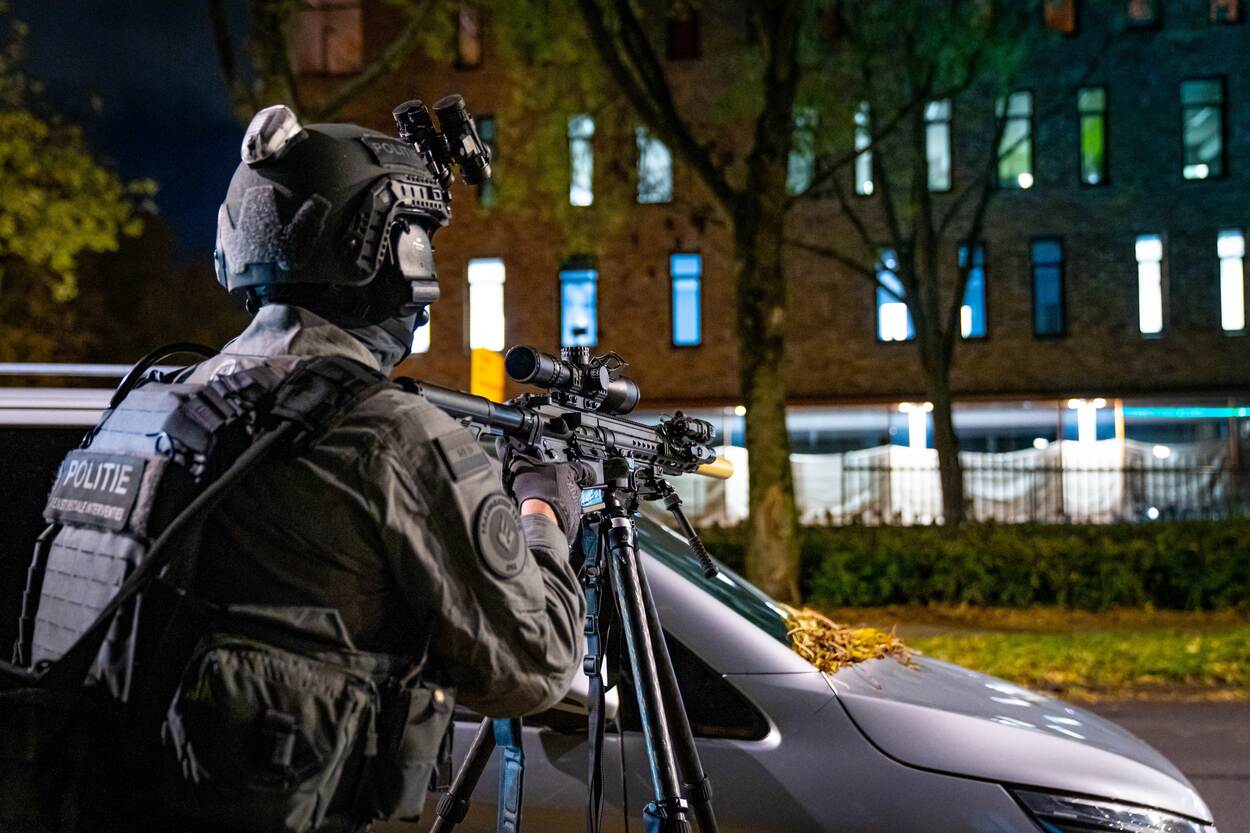Non-Natives Under Threat? Domestic Extremism in the Netherlands, 2025

Non-Natives Under Threat? Domestic Extremism in the Netherlands, 2025
The flashpoint case
Dutch authorities say a 24-year-old man was arrested on 14 August 2025 in Badhoevedorp on suspicion of preparing a right-wing terrorist attack. Acting on intelligence from the AIVD, police searched his registered address in Erp (Noord-Brabant) and found prohibited firearms and ammunition; prosecutors also suspect the illegal manufacture of weapons and ammunition. A Rotterdam examining magistrate remanded him in custody for 14 days as the investigation continues. (om.nl)
Prosecutors add that the suspect claims membership of the Geuzenbond, a youth-focused extreme-right network the Dutch counterterrorism office classifies among so-called “active clubs” that seek to normalize extremist ideology. Reporting also connects him to the nationalist student association GNSV in Nijmegen. (om.nl, NL Times, NOS)
A climate that worries security officials
This incident comes amid a sustained “substantial” terror threat level (4/5) in the Netherlands, meaning officials judge there is a real chance of an attack. Recent assessments emphasize that both jihadist and right-wing milieus are capable of violence and that online radicalization—especially of young people—is accelerating. (Government.nl, english.nctv.nl, NL Times)
At the European level, Europol’s TE-SAT 2025 notes continuing arrests for right-wing terrorism alongside other forms, underscoring a complex, multi-source threat picture. (Europol)
Words, images—and thousands of discrimination reports
Parallel to the arrest, the Netherlands has seen an extraordinary wave of discrimination complaints tied to a social-media image posted by PVV leader Geert Wilders. What began as 2,500+ reports in the first days grew to 9,000+, then 12,500+, and by 22 August had surpassed 14,000—a record according to Discriminatie.nl, which has now filed a criminal complaint. While the legal process must run its course, the progression illustrates how political rhetoric and imagery can make people—especially religious and ethnic minorities—feel less safe. (NOS, Trouw, discriminatie.nl, RD.nl)
What this means for non-Dutch residents
Put bluntly: the risk environment is tougher than it was a few years ago. That does not mean daily life in the Netherlands has become universally dangerous for non-natives. It does mean three things are simultaneously true:
- Capability & intent exist in fringe right-wing networks. The Badhoevedorp case shows a suspect allegedly willing to act and equipped to do harm, prompting pre-emptive intervention. (om.nl)
- The normalization problem is real. Officials are explicit that “active clubs” work to mainstream extremist ideas; AIVD warns of online ecosystems that hook minors and young adults. (om.nl, english.aivd.nl)
- Polarizing messaging has measurable social impact. Tens of thousands of people felt compelled to report one image as discriminatory—an indicator of heightened anxiety among targeted communities. (RD.nl)
How institutions are responding
- Early-warning & disruption. The AIVD referral was decisive; the OM and Landelijk Parket moved before any attack occurred—exactly how prevention is supposed to work under Dutch law. (om.nl)
- Monitoring of extremist networks. NCTV’s public framing of Geuzenbond and “active clubs” signals active scrutiny of youth-oriented scenes and their cross-border links. (om.nl)
- Rule-of-law remedies. Discrimination.nl’s aangifte over the Wilders image—after a record volume of reports—shows accessible legal channels when speech arguably crosses into group insult or incitement. (RD.nl)
Practical safety notes for non-natives
- Report threats & incidents. For emergencies, call 112. For hate incidents (online/offline), use Discriminatie.nl or Meld.Online Discriminatie; both can advise and, where appropriate, escalate. (discriminatie.nl, meld.onlinediscriminatie.nl)
- Use community routes. Local anti-discrimination bureaus (part of Discriminatie.nl) offer confidential support, documentation, and mediation where possible. (discriminatie.nl)
- Stay informed. Follow NCTV updates on the national threat level and guidance for crowded events or high-profile dates. (english.nctv.nl)
Nationalism, representation, and a talent-drain paradox
The case is unfolding against a surge of nationalist politics: the PVV topped the 2023 election, then entered government in July 2024 before pulling out on 3 June 2025 over migration policy, collapsing the cabinet and pushing the country into a caretaker phase. Immigration and national identity have remained central—and polarizing—issues throughout. (Reuters, Government.nl)
At the same time, leadership remains disproportionately native-born. Dutch authorities and advisory bodies have repeatedly noted under-representation of people with a migration background in top roles. Concrete snapshots show the gap: at state rail operator NS, only 8.1% of senior managers had a migration background at end-2024—well below their share of the workforce and population—despite targets to raise it. National tools like the CBS Barometer Culturele Diversiteit exist precisely because the pipeline into higher echelons lags. (NS Annual Report, Centraal Bureau voor de Statistiek)
Meanwhile, a talent-drain paradox is visible. Even with a still-tight labour market (about 109 vacancies per 100 unemployed in 2024), internationals report barriers—especially Dutch-language requirements—and many leave after graduating because they cannot find suitable work. Nuffic finds 51% of alumni who left cite the lack of a fitting job, with language cited by 3 in 10 as a push factor; employers themselves acknowledge mixed readiness to hire internationals. Compounding this, knowledge-migrant inflows fell 26% in 2024 versus 2023. (Centraal Bureau voor de Statistiek, Nuffic, assets.plaece.nl)
Bottom line
The Badhoevedorp arrest is not an isolated online rant—it points to a willingness to act, weapons on hand, and ties to organized far-right circles. Combined with the unprecedented volume of discrimination reports tied to polarizing political imagery, it’s clear that extremist rhetoric and capability are converging in ways that non-Dutch residents feel acutely. The threat remains managed but real, and the system—from intelligence to prosecutors to civic reporting—is engaging. Vigilance, documentation, and early reporting help keep that system effective. (om.nl, NL Times, RD.nl)
Sources (key facts)
- Dutch Public Prosecution Service (OM) press release on the Aug. 14 arrest (Badhoevedorp/Erp; Geuzenbond; firearms; remand). (om.nl)
- NL Times roundup with additional scene details (Boerdonk/Erp; links to GNSV). (NL Times)
- NOS coverage of GNSV linkage and Nijmegen context. (NOS)
- NCTV threat level & assessments (Level 4; risks from right-wing and jihadist milieus). (Government.nl, NL Times)
- AIVD report on minors’ online radicalization across ideologies. (english.aivd.nl)
- Discriminatie.nl / ANP reporting of 14,000+ discrimination reports and aangifte over the Wilders image (Aug. 22, 2025). (RD.nl)
